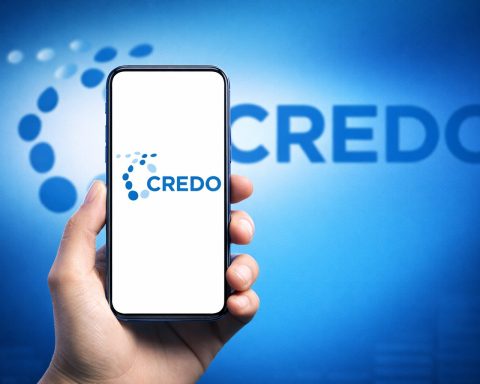- The global HR/HCM and payroll software market is projected to grow from about $35.3 billion in 2024 to $57.8 billion in 2029 and reach $91.7 billion by 2034, a roughly 10% annual growth rate.
- North America accounts for 36% of market revenue, while Asia-Pacific is the fastest-growing region with a forecast around 12% CAGR.
- The SMB/SME segment is expected to expand about 13% annually through 2029, outpacing large-enterprise growth.
- The market remains highly fragmented, with the top 10 vendors capturing only about 10% of global revenue in 2023, including Oracle, SAP, ADP, Sage, Paychex, UKG, and Paycom at roughly 1–2% each.
- A major wave of AI-driven product announcements in June–July 2025 spurred an industry forecast of about 45% annual growth for AI-powered HR agents over the next five years.
- Workday announced AI capabilities at DevCon 2025 including a unified AI Developer Toolset and Workday Illuminate, plus the Workday Agent System of Record and Agent Gateway, with a Recruiting Agent reportedly cutting screening time by 57% and filling 70% of roles from internal pools.
- UKG introduced UKG Bryte AI agents, launched Bryte payroll assistants for UKG Pro and UKG Ready, and partnered with ServiceNow to integrate Bryte with AI workflows.
- At Sapphire 2025, SAP SuccessFactors unveiled an AI-embedded suite with Joule pervasive across the portfolio, the first Performance Management Agent launching in H2 2025, and a 53-country payroll expansion.
- Oracle added role-based AI agents to Fusion Cloud HCM, including Career Planning, Performance Assistant, and Compensation Analyst, plus Generative AI features for job descriptions and performance reviews grounded in customers’ HR data.
- ADP expanded cloud platforms to more than 800,000 clients, with cloud revenue growing about 15% annually and margins above 23%, aided by the late-2024 $1.2 billion acquisition of Workforce Software.
Market Overview: Growth Across Regions and Segments (June–July 2025)
The Human Capital Management (HCM) software market continued to expand robustly through mid-2025, driven by cloud adoption, AI innovation, and rising demand from businesses of all sizes. A recent industry report projected the global HR/HCM and payroll software market to grow from about $35.3 billion in 2024 to $57.8 billion in 2029, reaching $91.7 billion by 2034. This implies a healthy ~10% annual growth, with North America currently the largest region (36% of the market) and Asia-Pacific leading in growth (forecast ~12% CAGR). Notably, small and mid-size businesses (SMBs) are a fast-growing segment – the SME segment is expected to expand ~13% annually through 2029, outpacing large-enterprise growth. This reflects how cloud-based HCM solutions are increasingly accessible to mid-market and SMB customers worldwide. Indeed, new vendors targeting SMBs (e.g. global payroll platforms like Deel) have quickly captured market share.
Despite consolidation by some large providers, the HCM software landscape remains highly fragmented: the top 10 vendors accounted for only about 10% of global market revenue in 2023. The leading players by revenue share include Oracle, SAP, ADP, Sage, Paychex, UKG, Paycom, and others – each holding only ~1–2% of the total market. This fragmentation highlights the continued opportunity for both major and emerging HCM vendors across all regions. Vendors are differentiating through advanced technologies (especially artificial intelligence), deeper functional breadth (e.g. payroll, talent, analytics), and industry-specific or regional expertise.
Market outlook remains optimistic. Analysts note that cloud-based HCM solutions have proven resilient and in demand even during economic volatility. Recurring revenue models and the mission-critical nature of HR, payroll, and workforce management are insulating providers from short-term swings. At the same time, vendors face pressure to deliver measurable business outcomes and ROI from new innovations like AI. As discussed below, the June–July 2025 period saw a major wave of AI-driven product announcements across the HCM sector, alongside strategic partnerships and continued customer momentum globally.
AI-Powered Innovations Reshape HCM Software
Generative AI and “agentic” AI have emerged as defining themes in HCM technology in 2025. Virtually all major vendors announced new AI-driven features or digital “agents” during June and July, aiming to automate repetitive tasks and augment HR decision-making. Industry experts predict explosive growth in this area – some analysts foresee 45% annual growth in the market for AI-powered HR agents over the next five years. The latest developments from June–July confirm that an “AI race” is well underway in HR tech:
- Workday introduced an array of AI capabilities at its DevCon 2025 conference, including a unified AI Developer Toolset to extend its new AI platform, Workday Illuminate. A centerpiece is the Workday Agent System of Record (ASOR) and Agent Gateway, which let customers integrate and manage third-party AI “agents” alongside Workday’s own AI bots [1]. This opens an ecosystem where partners (even tech giants like AWS) can plug their AI agents into Workday’s platform to collaborate on HR and finance tasks. “Our customers know that AI agents are going to be an important part of the future, and we want to give them a responsible and trusted way to manage all that,” said Matt Brandt, Workday’s SVP of Global Partners. By enabling a mix of human and digital workers, Workday’s vision is to treat AI agents as a new type of workforce that needs governance just like employees. The company also expanded its AI Copilot for developers and announced new AI services and APIs – all part of an effort to infuse AI across HR processes by year-end.
- UKG (Ultimate Kronos Group) similarly unveiled “UKG Bryte” AI agents integrated into its HCM suites. In late May, UKG launched Bryte payroll assistants for both its enterprise UKG Pro and SMB-focused UKG Ready platforms. These agents are designed to improve payroll accuracy and handle time-consuming tasks automatically, allowing HR staff to “focus on the most impactful aspects of their roles”. “This aligns with our vision to deliver agentic AI solutions that simplify complex processes and take on highly repetitive tasks,” explained UKG Chief Product Officer Suresh Vittal. UKG is taking a pragmatic approach by embedding AI where customers see immediate value – for example, Bryte can surface payroll discrepancies or answer employees’ routine HR questions. Notably, UKG partnered with ServiceNow to integrate Bryte agents with ServiceNow’s AI workflows, streamlining cross-platform tasks like case management [2]. These moves underscore UKG’s new strategic direction: under CEO Jennifer Morgan, the company is “repositioning as an AI-first workforce technology provider,” as highlighted at UKG’s June analyst day. UKG’s refreshed vision focuses on personalized, AI-driven solutions to tackle real-world workforce challenges (especially for frontline-heavy industries facing labor shortages). A forthcoming “UKG Bryte” virtual assistant will be central in delivering these AI-driven experiences to managers and employees.
- SAP SuccessFactors announced at its Sapphire 2025 event that AI would be deeply embedded across its HCM suite. SAP introduced its first AI-driven HR agent – a Performance and Goals Management Agent – slated to go live in SuccessFactors by November. Via SAP’s AI copilot Joule, this agent will automatically prepare managers for one-on-one performance conversations by gathering peer feedback and summarizing an employee’s achievements. SAP highlighted that Joule (its generative AI assistant) is now integrated throughout SuccessFactors and even available on mobile in 10+ languages. In early June, SAP rolled out a raft of new AI-powered features: for example, People Intelligence Hub in SAP’s data cloud to answer strategic workforce questions (like skills gaps) with analytics [3], and an AI-driven HR service management module to automate case routing and provide AI-generated case summaries for HR helpdesk staff. SAP’s President of SuccessFactors, Dan Beck, emphasized that “AI is embedded, ubiquitous, and in almost all cases accessible via Joule” across the HCM portfolio. These innovations – from agent-based performance coaching to AI-guided workforce planning – aim to boost productivity and decision-making for SAP’s global HR client base.
- Oracle has also been infusing AI throughout its Fusion Cloud HCM suite. Earlier in 2025 (at Oracle CloudWorld Mumbai), Oracle debuted role-based AI agents built into its HCM platform. Available immediately, these Oracle AI agents automate a wide range of HR workflows to “unlock human potential” and let employees focus on more meaningful work. Oracle’s new agents cover career development (suggesting career paths and learning opportunities tailored to an employee’s profile), performance coaching (e.g. goal-setting advice), time and pay management (automating timecard submissions and tax withholding guidance), and even employee self-service for onboarding, internal mobility, benefits, and more. For instance, a “Job Seeker” AI agent can coach employees on internal job moves (resume tips, interview prep) to foster internal mobility. Oracle EVP Chris Leone noted that complex HR processes can “distract from primary job responsibilities,” so Oracle’s AI agents are meant to streamline tedious tasks and “deliver tailored career support” at scale. Beyond agents, Oracle’s recent releases added Generative AI features for content creation and insights – e.g. assisted authoring of job descriptions and performance reviews using foundation models from Cohere [4]. Oracle’s approach emphasizes securely grounding AI on an organization’s own HR data to ensure relevance and privacy. These efforts keep Oracle competitive with its peers in the AI-driven HR tech race.
In addition to these headline initiatives, many other HCM providers rolled out AI enhancements during this period. Ceridian Dayforce (which rebranded simply to Dayforce) held a virtual “Dayforce AI Summit” in June to highlight new capabilities in its platform. The May 2025 Dayforce release introduced an upgraded Dayforce AI Assistant (formerly “Co-Pilot”) that gives employees a mobile chatbot for quick HR answers and tasks like checking PTO balance or requesting time off. Dayforce also deployed AI in its learning and skills module – using AI to tag and recommend training content based on an employee’s skill profile, and even matching employees to mentors or career opportunities via AI suggestions. Managers can now endorse employees’ skills in-system, feeding the AI with verified data for better talent matching. Ceridian’s goal is to “turn AI hype into hard results” by focusing on tangible improvements in talent development and employee experience. Likewise, ADP has been embedding AI across its product portfolio (from payroll automation to recruiting tools). While ADP did not announce a specific new “agent” in June/July, the company has highlighted how generative AI is transforming HR work – for example, automating resume screening and job description writing to free up recruiters. ADP’s 2025 trend report found 57% of employers are upskilling their workforce to address AI skill gaps, even as employers navigate emerging laws regulating AI in hiring (like new disclosure and bias-audit requirements in jurisdictions such as New York City and Colorado). Ensuring ethical, compliant AI use in HR is a growing concern, and vendors like ADP are advising clients on best practices to blend AI with human oversight.
Importantly, the AI wave extends beyond core HCM suite vendors. Specialized HR tech providers also announced AI-driven tools in mid-2025, indicating a broad market shift. For example, Culture Amp (employee engagement platform) will launch an “AI Coach” in Q3 2025 to provide personalized leadership coaching via a conversational interface. Performance management firm 15Five introduced “Kona by 15Five,” an AI-powered manager effectiveness coach that uses emotional intelligence data to improve leadership skills. Even industry analysts are contributing AI solutions: The Josh Bersin Company announced updates to its “Galileo” HR AI co-pilot, which has now been integrated into platforms like ServiceNow’s Now Assistant and the HiBob HRIS, bringing AI insights and training support directly into those systems. These developments show how AI is permeating every corner of HR technology – from SMB-focused HR platforms to enterprise service management – as a means to boost efficiency, personalization, and data-driven decision making in people management.
Major Vendor Highlights and Announcements (June–July 2025)
Workday: Ecosystem Growth, Recruiting Recognition, and AI Roadmap
Workday, a leader in cloud HCM for enterprises, had a busy early summer with product innovation and industry accolades. In June, Workday officially launched its AI Partner Network and Agent Gateway (previewed above) to accelerate an ecosystem of AI integrations. This initiative is drawing a range of partners – from Big Four consultancies to tech firms – to build Workday-compatible AI agents. Notably, Amazon Web Services (AWS) is collaborating with Workday on the agent initiative: “With Workday’s Agent System of Record, organizations will be much better positioned to ethically manage all these agents… Together, we’ll empower organizations to unlock exponential value while maintaining our shared commitment to security and responsible AI,” said Swami Sivasubramanian, AWS’s VP of AI, endorsing Workday’s approach.
On the market front, Workday announced on June 10 that it was named a Leader in Gartner’s 2025 Magic Quadrant for Talent Acquisition (Recruiting) suites. Workday’s recruiting product (bolstered by its 2024 acquisition of HiredScore for AI-based candidate matching) is now part of an AI-powered suite called Workday Illuminate [5]. Illuminate encompasses Workday Recruiting alongside HiredScore’s algorithms, new Candidate Engagement tools, and messaging capabilities [6]. According to Workday, these tools have measurably improved hiring outcomes – for example, companies using Workday’s AI-driven “Recruiting Agent” have reduced candidate screening time by 57% on average and fill 70% of roles from internal talent pools (boosting retention). “In today’s constantly evolving market, finding and attracting the right talent is more challenging than ever,” noted Workday’s Office of the CHRO GM Aashna Kircher, adding that being named a leader by Gartner “underscores our commitment to helping organizations overcome these challenges… so they can hire with confidence and build high-performing teams” [7]. Workday also reported that over 4,700 organizations worldwide now use its talent acquisition suite, including major employers like AdventHealth, JLL, and Pfizer [8].
Financially, Workday continues to grow its customer base across regions (recent wins include the Los Angeles Department of Water & Power, which in June went live on Workday HCM and Payroll for 12,000 employees, replacing decades-old legacy systems). Workday’s focus going into the second half of 2025 is on executing its AI roadmap – delivering the new agent capabilities to early-adopter customers by late 2025, and rolling out additional AI widgets and developer tools to enable tailored HR solutions. The company is positioning itself not just as an HR software provider, but as what it calls “the AI platform for managing people, money, and agents” – reflecting the expanded scope of enterprise management in the AI era.
SAP SuccessFactors: AI-Embedded Suite and HR Transformation
At SAP, the June Sapphire 2025 conference set the stage for major HCM updates. SAP SuccessFactors unveiled a slate of AI-driven innovations aimed at what SAP calls “future-ready workforce” initiatives. As discussed, SAP has made its AI copilot “Joule” ubiquitous across SuccessFactors – enabling natural language queries and assistance in over 10 languages on both web and mobile. One headline announcement was the introduction of HR-specific AI “agents”: the first, a Performance Management Agent, will proactively assist managers by aggregating feedback and preparing talking points for performance reviews. This agent will formally launch in SuccessFactors in H2 2025, with more to follow as SAP develops a whole family of AI assistants for HR.
SAP also rolled out People Analytics and planning tools that take advantage of its strength in data. The new People Intelligence hub leverages SAP Business Data Cloud to allow HR and business leaders to ask strategic questions (in plain language) that blend HR data with finance and operations data [9]. For example, a manager could ask, “Which critical skills might we lack for an upcoming project?” and get instant insights, rather than manually crunching spreadsheets. This reflects a trend of breaking down data silos – SAP is using its cross-enterprise footprint to give HR a more predictive, analytics-driven role in workforce planning [10].
Another notable update was SAP’s partnership with WalkMe to improve user adoption of HR tech. SAP SuccessFactors now integrates WalkMe’s in-app guidance tools, providing contextual tips and automation for users navigating HR processes. This is especially useful for complex tasks like benefits enrollment or performance reviews – the goal is to “help employees work smarter and faster” by reducing training time and confusion. Additionally, SAP launched a new Enterprise Service Management module for HR, which applies AI to help HR service teams resolve employee tickets more efficiently (with features like AI-generated case summaries and email draft suggestions).
SAP’s messaging around these releases is that “AI is embedded, ubiquitous” in the SuccessFactors HCM suite now. By combining its unmatched business data with HR data, and layering in AI, SAP aims to deliver “unrivaled AI” that boosts productivity and decision-making. Early customer feedback is positive – SAP noted that some clients in its AI beta programs have already seen substantial time savings. With these enhancements, SAP is targeting not just its traditional enterprise base but also emphasizing support for mid-market and regional customers (e.g. adding local payroll support for more countries – 53 locales natively by mid-2025). Overall, SAP’s June–July developments reinforce its strategy of weaving AI through every HR process from hire to retire, in a way that aligns with SAP’s broader cloud ERP ecosystem.
Oracle HCM: User Experience and AI-Assist for HR
While Oracle’s June announcements were a bit more behind-the-scenes (no major conference in that window), the company has steadily been enhancing its Oracle Fusion Cloud HCM offering. Oracle’s focus is on AI-enabled user experience improvements and reducing friction in daily HR tasks. For instance, Oracle has rolled out new “Oracle ME” employee experience features and Oracle Recruiting updates (a late-2024 update introduced “Direct Apply” to streamline job applications in Oracle Recruiting Cloud). By mid-2025, Oracle’s HCM suite included numerous AI-driven functions: AI Talent Matching to recommend roles or candidates, AI assistance in payroll (for anomaly detection), and digital assistants that handle common employee queries through Oracle’s chat interface.
One standout is Oracle’s set of role-based AI agents (announced February 2025) that are now generally available in the HCM suite. These agents act like virtual HR aides for different domains: for example, the “Career Planning” agent suggests personalized career paths and learning plans for employees; the “Performance Assistant” gives employees tips on improving goal achievement before reviews; and the “Compensation Analyst” agent helps managers with salary decisions by providing data on market pay and internal policies. Oracle emphasized that these AI agents are immediately usable and can automate end-to-end processes “to help unlock human potential”. By offloading repetitive tasks (like timecards or navigating leave policies), Oracle believes employees and HR teams can refocus on strategic work.
In June, Oracle also continued integrating Generative AI across its cloud applications. Oracle’s generative AI features (developed on OCI with Cohere’s large language models) bring assisted authoring, content recommendations, and smart summaries into HCM workflows [11]. For example, a recruiter can enter a few key skills and job title, and the system will draft a job description that the recruiter can refine [12] [13]. Performance review prep can be accelerated by AI summarizing an employee’s feedback and achievements from the past year [14]. Oracle highlights that its approach keeps each customer’s AI models “grounded” in their own secure HR data – ensuring relevance and addressing data privacy concerns.
On the customer side, Oracle picked up some notable clients in Q2 2025. For example, Orange County (Florida) selected Oracle’s AI-powered Cloud HCM as part of a broader cloud ERP project, and Oracle announced an “Isolated Region” cloud deployment for Singapore’s government that will include HCM capabilities (underscoring Oracle’s push in the public sector). These wins, along with continued strength in finance and HR cloud sales, have kept Oracle’s HCM revenue on a positive trajectory. Oracle’s challenge ahead will be to stay agile against pure-play HR competitors – but its broad cloud suite and deep R&D pockets for AI position it well. As Oracle’s Chris Leone put it, the company’s aim is to “reshape the employee experience” by embedding AI everywhere in HR processes so that productivity is boosted “across [the] workforce”.
ADP and Payroll Providers: Cloud Momentum and Platform Expansion
ADP, one of the longest-standing players in HR and payroll, spent June and July 2025 further solidifying its cloud transition and broadening its reach. ADP’s flagship platforms (Workforce Now for mid-market and RUN for small businesses) continued to grow in adoption, contributing to ADP’s consistently strong financial performance. In a late June investor analysis, ADP was highlighted as a “compounding powerhouse” in HCM, with its stock up 135% since 2020 due to successful cloud innovation and steady earnings. ADP now serves over 800,000 clients on its cloud platforms, and its cloud revenue has been growing ~15% annually, helping push operating margins above 23%. This underscores how ADP’s pivot from traditional bureau payroll to SaaS-based solutions is paying off. Indeed, while some smaller payroll tech firms stumbled during earlier slowdowns, ADP’s recurring revenue insulated it from volatility.
On the product side, ADP is leveraging both organic development and acquisitions to expand its HCM suite. A key move was ADP’s late-2024 acquisition of Workforce Software (a global workforce management solutions provider), which by mid-2025 is being integrated to enhance ADP’s time & labor management capabilities. This deal, reportedly around $1.2 billion, gives ADP a more robust enterprise-grade scheduling and timekeeping system (complementing ADP’s own scheduling tools and the Kronos/UKG products some ADP clients use). With Workforce Software’s technology, ADP can better serve large, complex organizations with 24/7 operations. ADP is also expanding partnerships in benefits administration and talent management to round out its full-service HR offerings for mid-sized employers.
Moreover, ADP has been vocal about the trends shaping HR in 2025, positioning itself as a thought leader. In a June 2025 trends report, ADP noted that generative AI, skills-based hiring, and employee well-being are top-of-mind for HR leaders. ADP’s research echoed the broader industry: the company found most workers expect AI to impact their jobs within 2–3 years, yet employers are simultaneously wary of the patchwork of new AI-related regulations (for instance, laws requiring bias audits of recruiting algorithms). ADP’s Chief Privacy Officer Jason Albert anticipated “more such laws” coming and has been advising clients on compliance. In the same vein, ADP’s Chief Diversity Officer Tiffany Davis observed a shift toward skills-based talent practices – employers are valuing skills and experience over traditional credentials, partly to address fast-changing skill needs in the age of AI.
In summary, ADP spent this period doubling down on its strengths: reliable cloud services (with high compliance standards across jurisdictions) and a broadening suite that now spans HR, payroll, workforce management, benefits, and more. The company is regarded as a stable leader in the HCM sector, particularly for payroll – it was recently ranked the largest payroll/HCM vendor globally by revenue (though even ADP held only ~1.23% of the fragmented market in 2023). With tens of millions of employees paid through ADP’s systems, the company is now infusing AI in behind-the-scenes ways to improve efficiency (e.g. using AI/ML to flag payroll anomalies or suggest better scheduling). ADP’s leadership expects continued growth through 2025, and has even signaled openness to further acquisitions if opportunities arise (bolstered by a strong balance sheet). For clients, ADP’s message is about “combining tech and service” – offering cutting-edge cloud tools backed by its expertise in compliance, something especially valued by SMBs that lack large HR teams.
UKG: New CEO, New Partnerships, and Product Enhancements
UKG (born from the merger of Ultimate Software and Kronos) entered a new era in mid-2025. Jennifer Morgan, former SAP co-CEO, took the helm as UKG’s CEO and immediately signaled a “strategic refresh”. At the June 2025 UKG Analyst Day, Morgan and her reenergized executive team outlined a vision of UKG as an “AI-first” workforce technology company. This means embedding AI in all layers of UKG’s offerings – from frontline employee tools to executive analytics – with an emphasis on pragmatism and measurable outcomes. One concrete output of this strategy is UKG’s FleX platform (a modern, API-driven architecture) and the UKG Bryte digital assistant mentioned earlier. UKG is concentrating on improving user experience and accountability in its software, which historically has been very feature-rich but sometimes less user-friendly. Part of the refresh involves a brand update and simplifying interfaces to ensure technology actually empowers end-users on the ground (nurses, retail associates, plant workers, etc.).
In late June, UKG made headlines by signing a notable sports partnership: the Ladies Professional Golf Association (LPGA) named UKG its official HR, Payroll, and Workforce Management technology partner. This multi-year partnership will see the LPGA and its affiliated tour organizations use UKG Pro for HR and payroll, and UKG workforce management for scheduling and time tracking. It’s not just a sponsorship – UKG will help the LPGA modernize people operations, with an angle of supporting women’s sports. “We’re leveraging AI and data to elevate workforce management and the athlete experience,” an LPGA statement noted. UKG has been actively aligning itself with causes around diversity, equity, and inclusion (DEI) – for instance, it also sponsors the UKG NWSL Challenge Cup in women’s soccer. These partnerships expand UKG’s brand reach and underscore its commitment to “people-first” values (the company’s tagline is “Our purpose is people”).
On the product update front, beyond AI agents, UKG merged its core HR and workforce management strengths in new ways. A June update to UKG Dimensions (its flagship workforce management solution) introduced advanced labor forecasting that uses machine learning on historical data to better predict staffing needs – critical for industries like hospitality and healthcare as demand fluctuates. UKG’s HCM suite (UKG Pro) saw enhancements in its talent acquisition module, integrating text messaging and AI-powered resume screening to speed up hiring. Additionally, UKG’s mid-market solution UKG Ready (formerly Kronos Workforce Ready) rolled out a refreshed interface and tighter integrations between scheduling and payroll, aiming to reduce administrative work for smaller HR teams. Analysts who attended the UKG event came away noting that UKG is focusing on “frontline empowerment” – giving managers and employees mobile-first, AI-assisted tools to solve daily workforce issues (like filling a last-minute shift or checking team engagement survey results). If successfully executed, UKG’s blend of HR, payroll, and time solutions – all infused with AI insights – could position the firm as a true “strategic partner for organizations navigating the future of work,” not just a software vendor.
Other Notable Players: Ceridian Dayforce, Emerging Innovators, and Regional Updates
Outside the above giants, many smaller or emerging HCM players made news in June–July 2025:
- Ceridian Dayforce (a top HR/payroll provider especially in North America) reported solid growth and continued its push into new markets. Its Q1 FY2025 revenues were up ~16% in constant currency, though it gave cautious Q2 guidance amid intense competition. Product-wise, Dayforce doubled down on AI (as detailed earlier: skills engine, AI Assistant upgrades, etc.) and on global expansion. The company has been hosting Dayforce Summit events in multiple cities in 2025 to engage local clients. In Canada, Dayforce is making a “strategic play for SME dominance,” for example by promoting its Powerpay product for small businesses. Ceridian also quietly completed the integration of Ideal – an AI recruitment startup it had agreed to acquire – to enhance Dayforce Recruiting with AI screening and chatbot capabilities. Overall, Ceridian/Dayforce is striving to maintain its stronghold in HR/payroll while expanding its talent management and analytics features to compete with larger suite vendors.
- Payroll and HR Outsourcing firms like Paychex and Paycor continued to target the SMB market. Paychex (holding ~1.16% global market share in HR/payroll software) launched updates to its Flex platform, including more self-service HR analytics for small business owners and new integrations with popular accounting software. Paycor and Paycom similarly added features; for instance, Paycom introduced an AI-based resume parsing tool in its ATS and touted its “self-service payroll” app (Betty) that lets employees do their own payroll with AI verification – a novel approach to reducing HR workload. These providers emphasize ease-of-use and compliance for smaller employers who may not have dedicated HRIS staff.
- Global and regional HCM startups saw significant activity. Darwinbox, the HR tech unicorn based in India, completed a ₹86 crore (~$10M) employee stock buyback in late June as a reward to long-term employees – its third ESOP buyback in four years, signaling the company’s growth and valuation rise. Earlier in March, Darwinbox secured a $140 million investment co-led by Partners Group and KKR (global private equity firms), bringing additional capital to fuel its international expansion. Darwinbox has been expanding from APAC into the Middle East and Europe, pitching its agile, mobile-friendly HCM suite as a regional alternative to Oracle/SuccessFactors for enterprises. Notably, Darwinbox also ventured into the AI space by launching a Model Context Protocol (MCP) server in May – aligning with the same MCP standard that Workday’s agent framework uses – to enable AI agents and models to collaborate within its platform. This suggests even newer players are adopting open standards to integrate AI services, striving to stay on the cutting edge.
- In Europe, Personio (Germany-based HR platform for SMBs) remained a prominent player, though no major mid-2025 funding news emerged (it raised $200M at an $8.5B valuation in late 2021 and continues to grow that valuation through execution). Personio did announce new AI-driven features at its HR tech conference (H.U.G. 2024) – including an upcoming AI workflow assistant – which were being rolled out in 2025. Similarly, HiBob (another fast-growing mid-market HRIS, based in Israel/London) integrated with Josh Bersin’s Galileo AI to give its customers on-demand HR advisory help. These European unicorns are focusing on mid-size enterprises and are increasingly incorporating AI and automation to compete with the big US-based suites.
- In the Asia-Pacific region, aside from Darwinbox, local vendors in Japan, China, and Southeast Asia made strides. For example, SAP Japan highlighted new local SuccessFactors clients as Japanese firms accelerate digital HR transformations ahead of expected labor shortages. And in China, indigenous HR software firms (like Beisen and Zhaopin) reportedly continued to innovate with AI despite a fragmented market and regulatory complexities – however, detailed news is limited due to fewer English-language disclosures.
- Finally, industry-specific HCM solutions showed momentum. Healthcare HR tech saw growth as hospitals grapple with staffing shortages – e.g., HealthStream released a new nurse scheduling AI module. In the gig workforce arena, companies like Deel and Papaya Global (global payroll/Employer-of-Record services) expanded offerings to manage contractor compliance and cross-border benefits, an area of high demand with remote work trends. Deel’s rapid rise (estimated ~0.5% of global market revenue in 2023) underscores the growth of global payroll solutions for distributed teams.
In summary, all segments of the HCM market – enterprise, mid-market, and SMB – saw meaningful developments in June–July 2025. Enterprise vendors rolled out advanced AI and analytics to deliver strategic value, while mid-market and SMB-focused players doubled down on simplicity, automation, and regional needs. Geographic coverage also broadened, with North American and European vendors investing in APAC and vice versa, and partnerships like the LPGA-UKG deal illustrating the diverse reach of HCM technology.
Expert Insights and Market Outlook
The flurry of mid-2025 announcements reflects a few overarching themes. First, AI in HCM is shifting from concept to reality. Vendors are moving past hype to deliver concrete AI applications (coaching agents, chatbots, intelligent automation) that can save time and improve HR outcomes today. Early adopters are reporting efficiency gains – for example, Workday’s AI recruiting tools boosting recruiter capacity by 54% in some cases – and this is driving competitive pressure across the industry. However, experts caution that human oversight remains critical. As one HR consultant quipped: “AI can be a powerful first draft, but HR must remain the final editor”, emphasizing the need for AI + human intelligence (HI) in sensitive functions like hiring decisions.
Secondly, the market’s growth projections remain strong but not without challenges. The forecasted ~$92B size by 2034 underscores the opportunity, especially with emerging markets and SMEs coming online. Yet, HCM providers must navigate potential headwinds like cybersecurity risks (protecting vast amounts of personal and payroll data) and a shortage of skilled HRIT professionals to implement and manage these sophisticated systems. Economic factors and inflation could also impact HR tech budgets, though so far HCM spending has proven relatively resilient (given talent management is a priority even in downturns). Many vendors, including ADP and Workday, have noted that the trend toward digital HR and cloud systems is secular and was even accelerated by the pandemic’s push toward remote work and digital processes.
Another insight is the continuing fragmentation vs. consolidation dynamic. While the market is fragmented overall, we see ongoing consolidation in subsegments (for instance, ADP absorbing WorkForce Software, Ceridian acquiring Ideal, etc.). Large HCM suite vendors are extending into adjacent niches (learning, skills, wellness, etc.), but at the same time, specialized startups pop up with innovative point solutions (like 15Five’s AI coaching, Culture Amp’s engagement AI, etc.). Gartner and other analysts expect some of these point solutions to be either acquired or to partner deeply with platform players to survive. Customers in 2025 are demanding integrated yet open solutions – they want the convenience of a single platform but also the ability to plug in innovative apps. This is why strategies like Workday’s partner network and SAP’s open HR APIs are important to watch, as they indicate a more ecosystem-driven approach in HCM.
From a regional perspective, North America and Western Europe remain the largest spenders on HCM software, but Asia-Pacific – led by China, India, and Southeast Asia – is the fastest growing region. Localization, language support, and compliance with local labor laws are crucial, and vendors that invest in these (either directly or via partners) are poised to gain share. For example, the research cited earlier shows APAC and even Eastern Europe outpacing growth in mature markets in the coming years. This suggests that by the late 2020s, the HCM market’s center of gravity will be more globally distributed than ever.
Finally, industry experts emphasize that HCM technology is increasingly about employee experience and engagement, not just administrative efficiency. The inclusion of employee feedback tools, AI career coaches, and personalized learning in many mid-2025 updates underlines this shift. As one Forrester Wave evaluation noted, vendors like Qualtrics (just named a leader in Employee Experience platforms by Forrester) are bringing advanced AI-powered sentiment analysis and natural language processing to help employers act on employee feedback. This convergence of HCM with employee experience (EX) and talent intelligence is expected to continue. HR leaders are looking for insight-rich platforms that can help them attract, retain, and develop talent in a very competitive labor market.
In conclusion, the June–July 2025 period in HCM software was marked by rapid innovation and optimistic forecasts. Major vendors like Workday, SAP, Oracle, ADP, and UKG all rolled out significant product enhancements – especially leveraging AI and analytics – while also forging partnerships and celebrating new customer wins across all geographies. Emerging players and specialized providers likewise pushed the envelope with niche solutions and fresh funding to challenge the status quo. The market is global and growing, with strong demand in every segment from Fortune 500 enterprises to small businesses. If current trends hold, 2025 is on track to be a breakthrough year in which AI-driven HCM moves from early adoption into mainstream use, workforce data becomes as strategic as financial data, and organizations increasingly rely on their HCM software partners to navigate the future of work. The collective developments of these two months signal an exciting, transformative era ahead for human capital management. The winners in this space will be those who can combine cutting-edge technology with deep HR domain expertise and trusted support, delivering tangible value for organizations and elevating the workforce experience.
Sources: Workday Newsroom [15]; HR Executive; SAP News Center [16]; GlobeNewswire; ADP/HR Dive; 3Sixty Insights; CRN; LADWP News; AInvest; Yahoo Finance/LPGA.
References
1. www.enterpriseaiworld.com, 2. hrexecutive.com, 3. news.sap.com, 4. futurumgroup.com, 5. newsroom.workday.com, 6. newsroom.workday.com, 7. newsroom.workday.com, 8. newsroom.workday.com, 9. news.sap.com, 10. news.sap.com, 11. futurumgroup.com, 12. futurumgroup.com, 13. futurumgroup.com, 14. futurumgroup.com, 15. newsroom.workday.com, 16. news.sap.com










